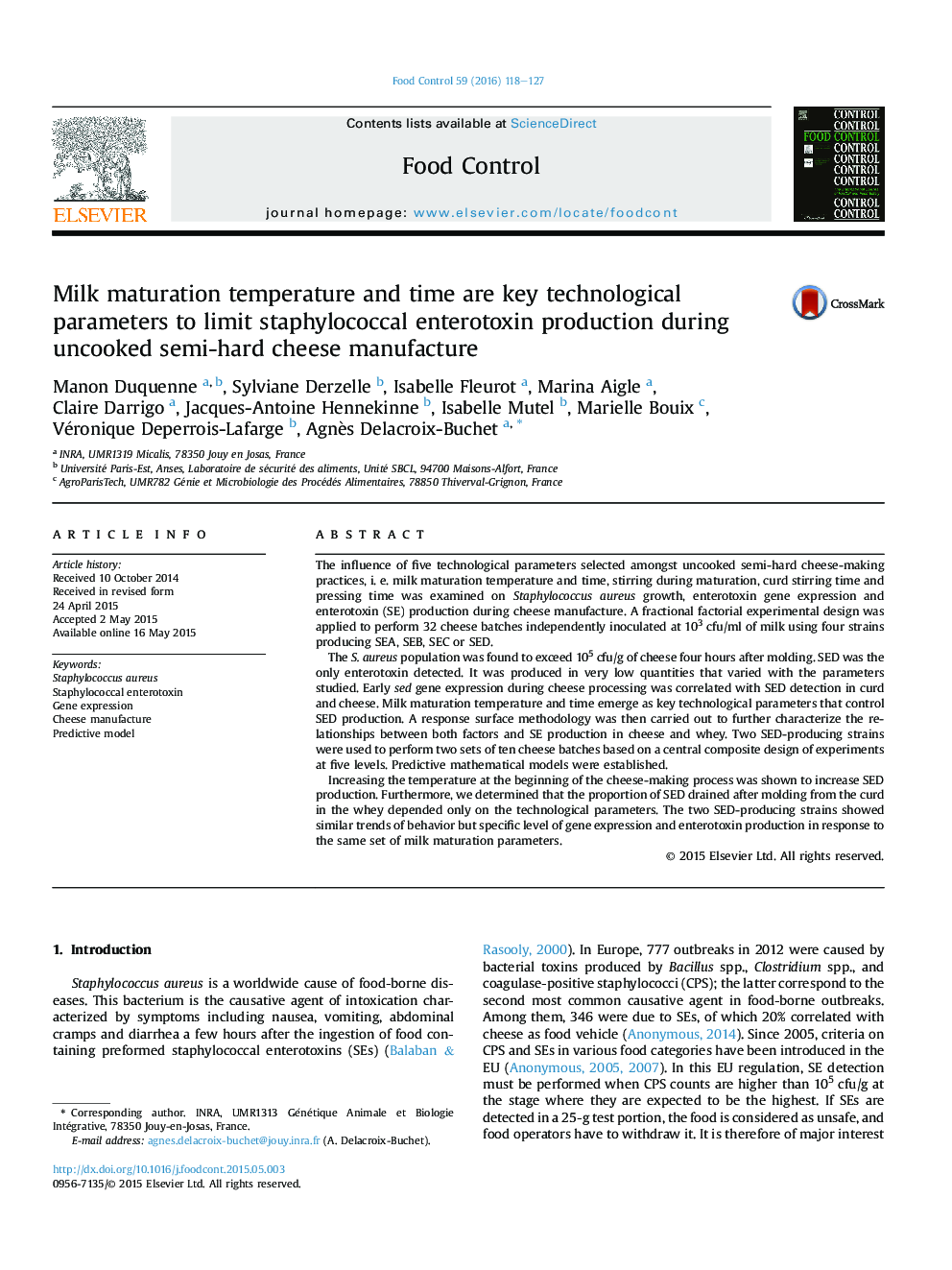| کد مقاله | کد نشریه | سال انتشار | مقاله انگلیسی | نسخه تمام متن |
|---|---|---|---|---|
| 6390514 | 1628403 | 2016 | 10 صفحه PDF | دانلود رایگان |
- 54 uncooked semi-hard cheeses were manufactured using two designs of experiment.
- Technological parameters were identified to limit SE production in cheese.
- Minimal SE production is achieved using low milk maturation temperature and time.
- Various proportions of SE can pass into the whey during the cheese-making process.
- Mathematical models that predict SED production in cheese were established.
The influence of five technological parameters selected amongst uncooked semi-hard cheese-making practices, i. e. milk maturation temperature and time, stirring during maturation, curd stirring time and pressing time was examined on Staphylococcus aureus growth, enterotoxin gene expression and enterotoxin (SE) production during cheese manufacture. A fractional factorial experimental design was applied to perform 32 cheese batches independently inoculated at 103 cfu/ml of milk using four strains producing SEA, SEB, SEC or SED.The S. aureus population was found to exceed 105 cfu/g of cheese four hours after molding. SED was the only enterotoxin detected. It was produced in very low quantities that varied with the parameters studied. Early sed gene expression during cheese processing was correlated with SED detection in curd and cheese. Milk maturation temperature and time emerge as key technological parameters that control SED production. A response surface methodology was then carried out to further characterize the relationships between both factors and SE production in cheese and whey. Two SED-producing strains were used to perform two sets of ten cheese batches based on a central composite design of experiments at five levels. Predictive mathematical models were established.Increasing the temperature at the beginning of the cheese-making process was shown to increase SED production. Furthermore, we determined that the proportion of SED drained after molding from the curd in the whey depended only on the technological parameters. The two SED-producing strains showed similar trends of behavior but specific level of gene expression and enterotoxin production in response to the same set of milk maturation parameters.
Journal: Food Control - Volume 59, January 2016, Pages 118-127
